Teamwork Makes the Dream Work
I went a little light on the text this weekend, so to make up for it, I have A LOT to say today. Clear your schedule for at least ten minutes before attempting to get through this post.
The International Thwaites GlacierA mass of ice that persists for many years and notably deforms and flows under the influence of gravity. Collaboration (ITGC) involves eight different projects, all focused on developing a better understanding of Thwaites GlacierA mass of ice that persists for many years and notably deforms and flows under the influence of gravity. - and each of the eight projects approaches the challenge of the glacier from a different angle - both literally and figuratively. Scientists have been on top of the glacier boring holes down to the sediments underneath, satellites orbiting miles above the surface have captured images that show the thickness and movement of the ice, and the Nathaniel B. Palmer icebreaker has carried researchers right up to its face to study the interaction between the ice and the ocean. Each of the eight projects, with the acronyms TARSAN, MELT, PROPHET, GHOST, GHC, DOMINOS, TIME, and THOR involves multiple scientists at various research institutions, all of who bring different strengths, knowledge, and technology to the fight to figure out what Thwaites is going to do over the next ten or fifty or one hundred years to change the shape of human civilization. (Looking back over that sentence, I have to wonder who dropped the ball on coming up with a catchy acronym for the “Geological History Constraints on the Magnitude of Grounding-Line Retreat in the Thwaites GlacierA mass of ice that persists for many years and notably deforms and flows under the influence of gravity. System” - with all those words in the title, it seems like someone could’ve done better than GHC.)
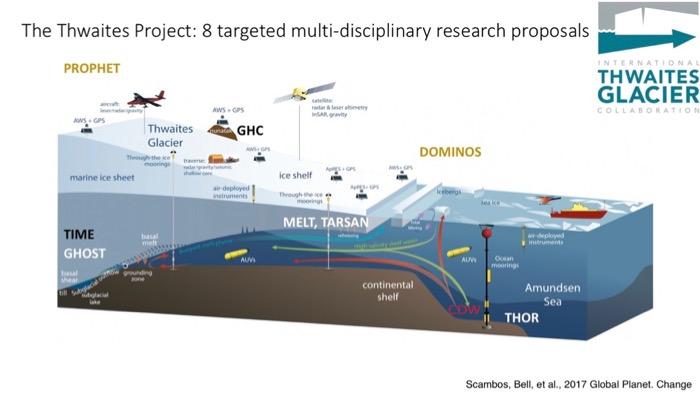
One thing that has struck me on this ship - which is primarily focused on Thwaites Offshore Research (THOR) - is how many different approaches there are to examining the sedimentary records and glacially-created topography of the seafloor in order to reconstruct how the glacier has changed in the past. The THOR team is attacking this problem from as many angles as possible, and they are just one of eight teams out there. Tasha Snow wrote about the synergistic effect of having so many professionals dedicated to this research on the blog she created during her trip with ITGC on the Palmer last year.
In addition to the Principal Investigators (or PIs, which are not people spying on Mr. Frank but rather the lead scientists working on the project), there are numerous graduate students here who are collecting data for their PhD projects. I asked Asmara Lehrmann, a PhD student at the University of Alabama, how she ended up on this ship in the Southern Ocean. Much like me, Asmara gives a lot of credit to the amazing educators who encouraged her curiosity and supported her as she developed her skills as a scientist. I definitely wouldn’t be here in this world of ice and water if it had not been for Jeannie Quattrocchi at Farnsworth Middle School, Chuck Bender at Guiderland Central High School, and Dr. Paul Sotherland at Kalamazoo College. Asmara credits her high school physics teacher, Ginger McDaniel, in San Antonio, Texas, as one of the people who inspired her interest in science and encouraging her to better understand the world around her.
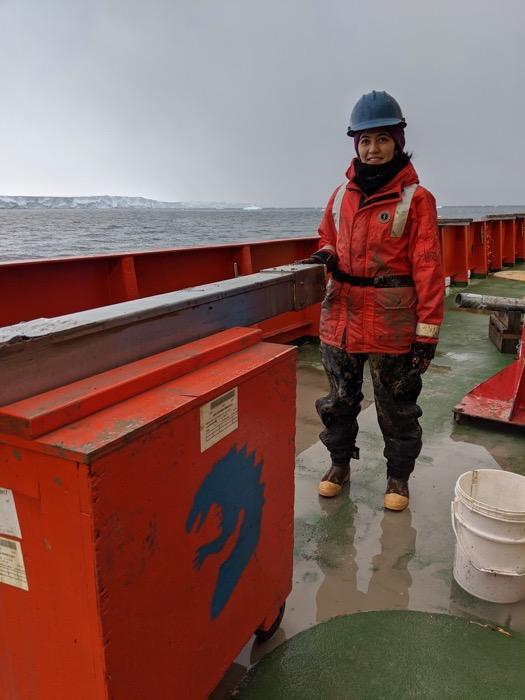
I remember Ms. Q standing on a desk, wearing a lab apron and goggles and singing about tiny bubbles in a beaker, and Mr. Bender saying, “Oooh, good research question!” which at the time I assumed meant he knew but wanted us to look it up ourselves but I now know maybe meant, “I don’t know and Google doesn’t exist yet so you’re going to have to figure this one out on your own.” Dr. Sotherland helped me find my first field research experience and always thanked me for making it to class on time. Ginger McDaniel and her husband are both physics teachers (although at rival high schools) and spend their summers traveling and filming silly videos which they use in their classrooms to help illustrate key ideas and to make learning relevant to the real world. Teachers out there - do you ever wonder what your students will remember about you? Will you be the one who motivates them to focus on science or challenges them to think differently about a problem or encourages them to step outside the classroom to continue their education? Maybe someday one of your students will be sitting in the aft dry lab on a research vessel in the Amundsen Sea while yet another breathtaking Antarctic sunrise colors the sky and ice, talking with a colleague about how great you are. #LifeGoals.
Asmara is contributing to the THOR team by studying the population of forams in sediment deposited at the bottom of the Amundsen Sea in front of Thwaites GlacierA mass of ice that persists for many years and notably deforms and flows under the influence of gravity.. Forams are single-celled protists that typically build themselves a fragile shell (or test) out of calcium (shout out again to 2017 Offline Wikipedia). While the tests are delicate, they are often preserved in the layers of sediment that collect on the seafloor. The diversity and abundance of certain species can be correlated with changes in water temperature, depth and salinity.
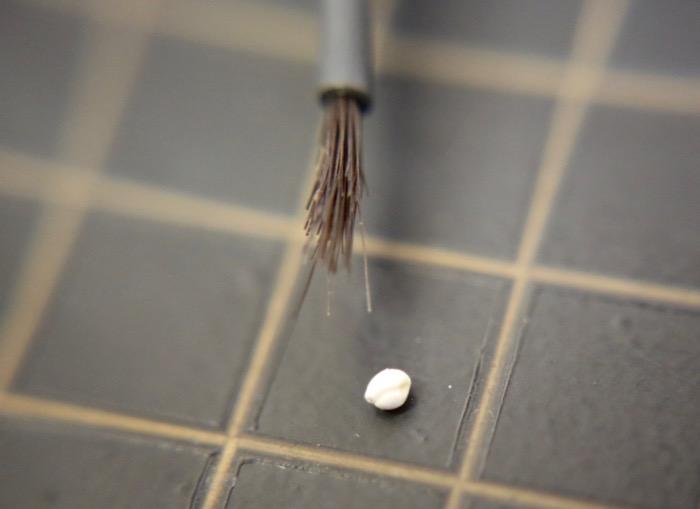
Asmara’s project is twofold: first, she is examining forams in the sediment-water interface, the topmost layer of deposits found at the bottom of the ocean, to see how their populations change when the water chemistry changes. She is hoping to find shifts in the dominant species present in places where the water is slightly warmer thanks to the presence of the CircumpolarLocated or found within the Earth’s polar regions. Deepwater (CDW). She's then taking samples from sediments that have been brought up from one, two, even three meters below the seafloor to search for similar shifts in foram populations that occurred in the past. She’ll decipher the secrets preserved in the remains of these tiny organisms to help her create a picture of the historic locations of the CDW. Other scientists will take Asmara’s discoveries and combine them with additional evidence in the sediments to show where the glacier went when the warm water was last here.
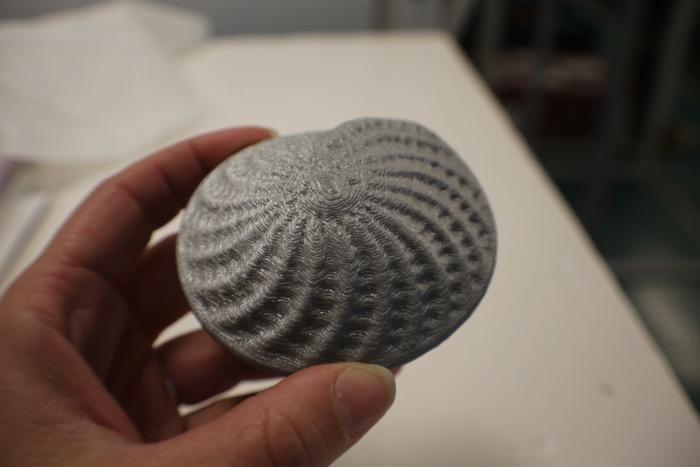
Here on the Palmer, Asmara has been spending a lot of time separating the forams from the surrounding sediments, a process that sometimes goes agonizingly slowly, and can lead to carpal-tunnel syndrome. She also wins the award for “Most Likely to Fall Asleep During a Movie,” one for “Dirtiest Glasses,” and - best of all - the award for “Most Commendable Effort to Get to Know Every Single Person Here.” Her kind spirit, easy laugh, and curiosity all contribute to the cohesiveness of the team - whether that team is THOR, ITGC, or just the 59 of us stuck on this ship together for two months.
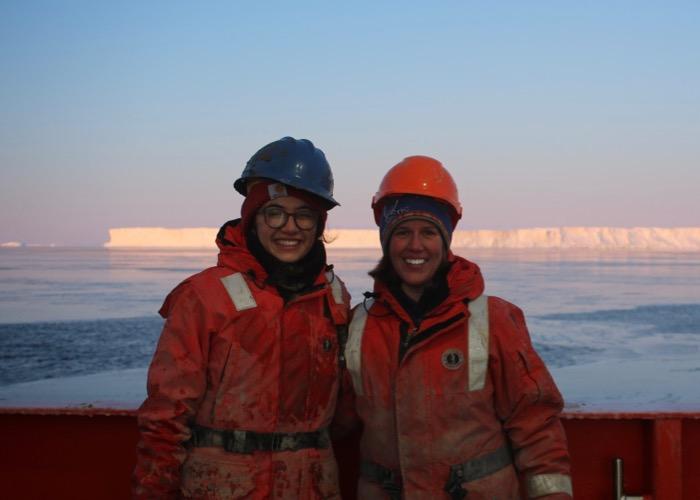


Comments